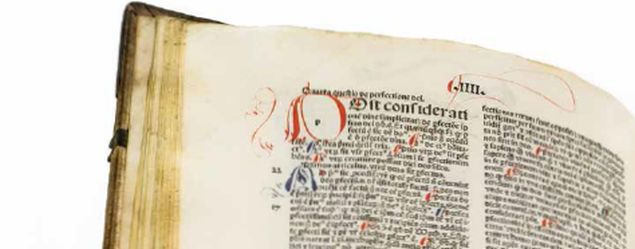
Commentaries on the Exhibit’s Works
Files
Download Commentary (174 KB)
Description
A brief commentary prepared by Mark Masthay, PhD, associate professor and chair of chemistry, on the following work:
Marie Curie
Thèse de Marie Curie
1903; presentation copy of thesis, Recherches sur les substances radioactives (Research into the Properties of Radioactive Substances)
Permission Statement
This item and all others in the Imprints and Impressions collection are licensed for research, educational and private use. Proper attribution must be used when downloading or reproducing this content. If you wish to use the materials for other purposes, please contact University of Dayton Libraries to obtain permission: 937-229-4221.
Contents of Streaming Media
Mark Masthay, chair of the chemistry department, discusses the significance of Marie Curie's research.




Comments
The foundations of the nuclear age, with its blessings and curses, were laid in part by the Polish prodigy Marie Skłodowska Curie. Because of the strong bias present against female academics in her day, Curie’s 1903 doctoral thesis, shown here, was accepted only with considerable difficulty—yet that same year, she received the Nobel Prize in Physics. Eight years later, for her work with the radioactive element radium, she received the Nobel Prize in Chemistry, making her the only person to date to win Nobel Prizes in multiple sciences.Curie died in 1934 of aplastic anemia, which almost certainly originated from her work with radioactive materials; her cookbook remains radioactive to this day, as do her research papers from the 1890s—the latter to such an extent that those studying them are required to wear protective clothing.